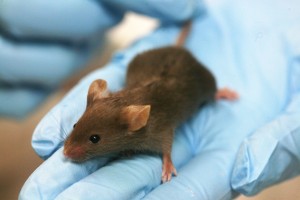The number of partners facing infertility in Canada has doubled since the 1980s; it is now predicted that every one in six couples face infertility. With the numbers rising, due to factors such as obesity and substance use, this issue is becoming increasingly more common in our modern world and scientists across the globe are in a constant race to overcome it.
New research emerging from Cambridge University has provided hope in the form of a new infertility treatment. In collaboration with the Weizmann Institute of Israel, researchers have come forward with a potential new form of in-vitro fertilization. Its origin? Human adult skin cells.

IVF: The insertion of sperm with a glass pipette into a human oocyte (egg cell). In-vitro Source: Wikimedia Commons
For the first time, scientists have been able create manmade (reproductive) primordial germ cells, known as PGCs; these cells act as predecessors and are considered the common origin of both sperm and egg cells. PGCs arise from pre-existing adult stem cells, which is an undifferentiated cell that has the ability to develop into many different tissue types. Their ancestor-like quality that creates a common origin, allows the eventual creation of many different cell types, such as skin and liver cells.
The team of researchers, led by Hanna and Azim Surani, followed a “recipe” originating from a Stem Cell Lab at Kyoto University, who created mice pups from a female germ cell by re-programming stem cells back in 2012. Based on this, the Cambridge-Weizmann team replicated the in-vitro portion of the experiment, where they grew the cells in a sterile and controlled environment.
The team was successful in making the primordial reproductive cells from human stem cells. The key finding was a gene known as SOX17, who is responsible for directing stem cells into their specialization; this is how primordial germ cells are created. This gene can also direct stem cells into becoming the external layer of skin, therefore showing that the reprogramming of an adult tissue type, such as skin cells, could give rise to the primordial germ cells.
Current British law has banned any fertility clinics in the United Kingdom from using a manmade sperm and eggs to treat an infertile couple, due to both ethical reasons as well as safety concerns. If this law is changed, the creation of a genetically identical sperm or egg cell can be taken from a patient for use in in-vitro fertilization.
This discovery has laid down foundation for all future research; scientists can now compare the development of both sperm and egg cells in both healthy as well as infertile people. Representing a huge step forward in the world of stem cell biology, the researcher’s work, published in the journal Cell, may mean a change in the age at which a woman can stop having children. This breakthrough means that manmade primordial germ cells are capable of passing on an offspring’s genetic code to their own offspring, creating the fundamental bond from generation to generation.
Check out Cambridge University’s video on a similar topic, the derivation of brain cells from skin cells:
Thanks for reading!
Samantha Mee


